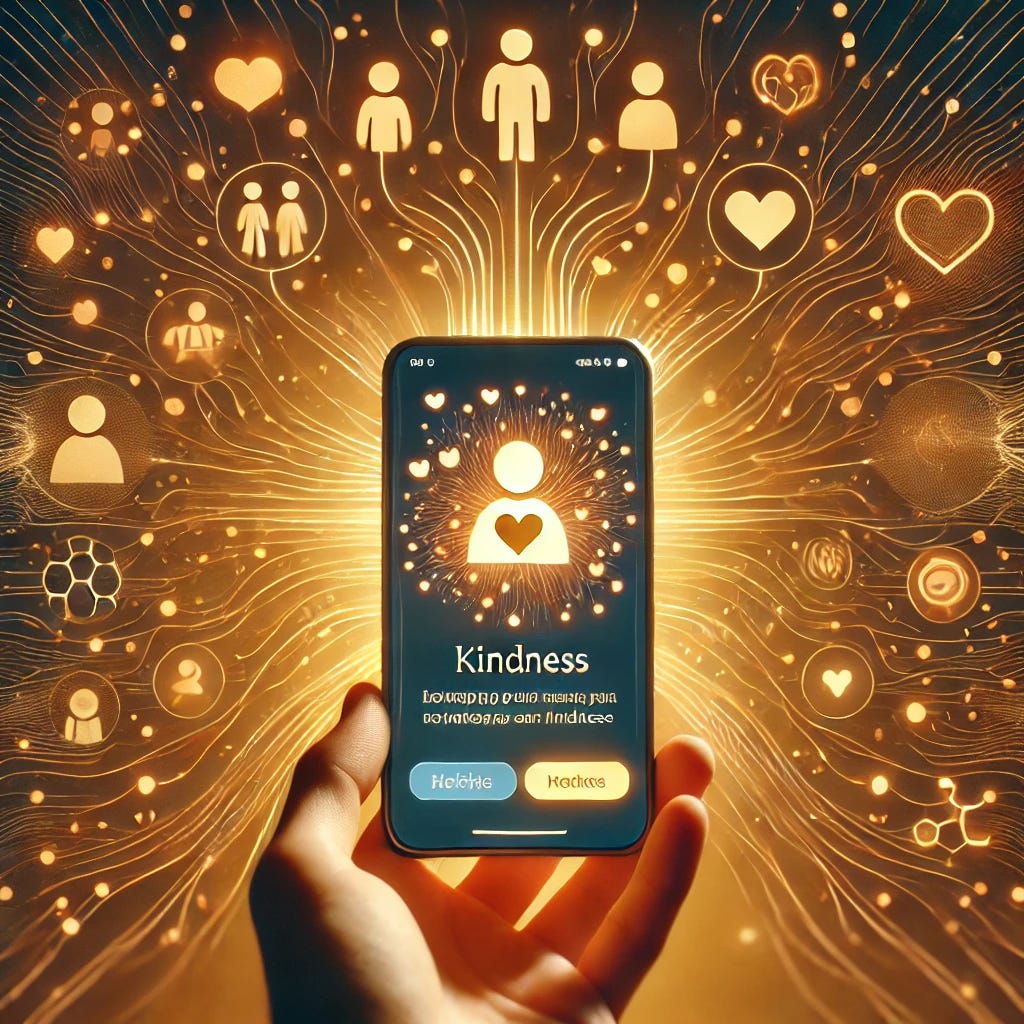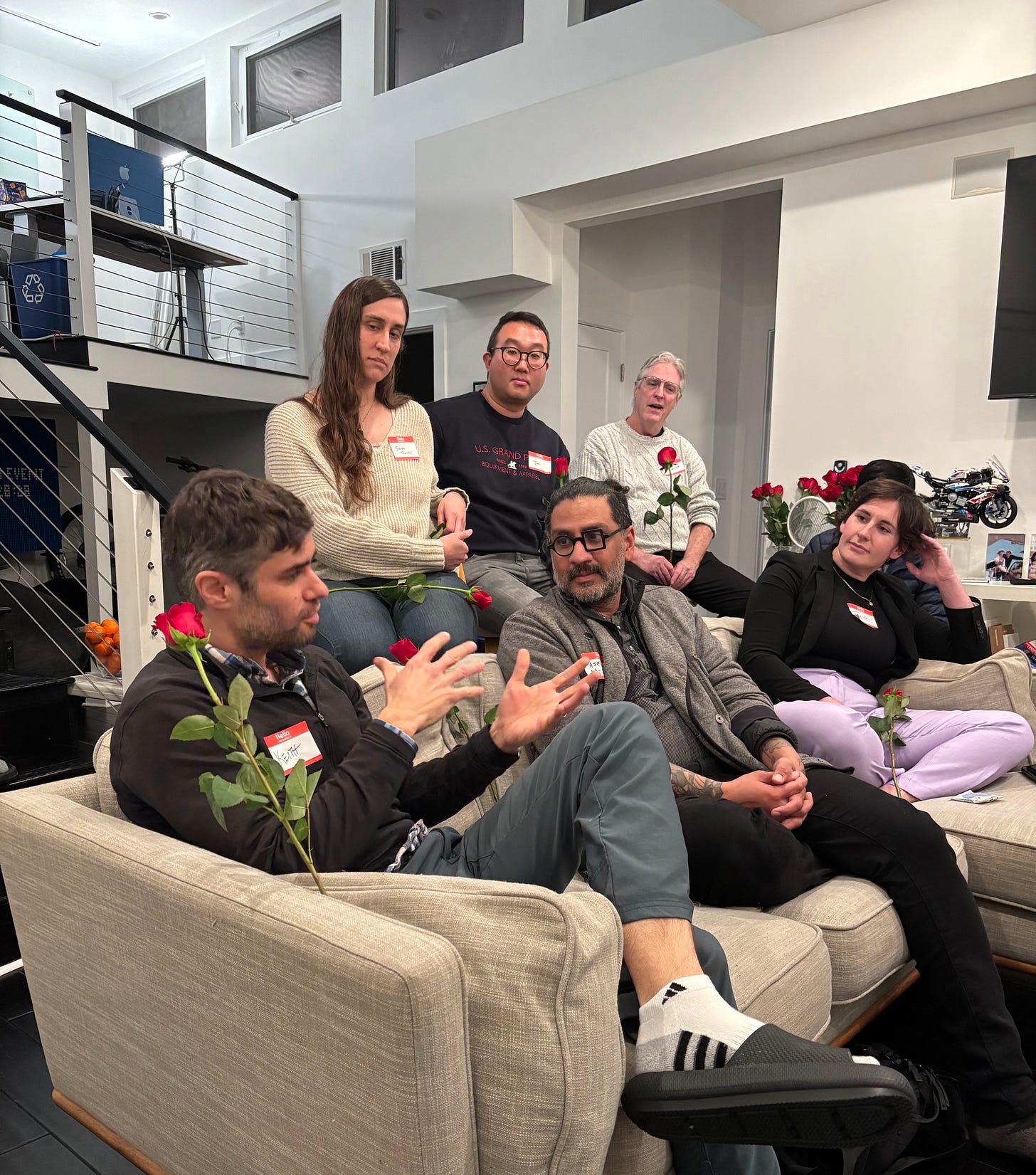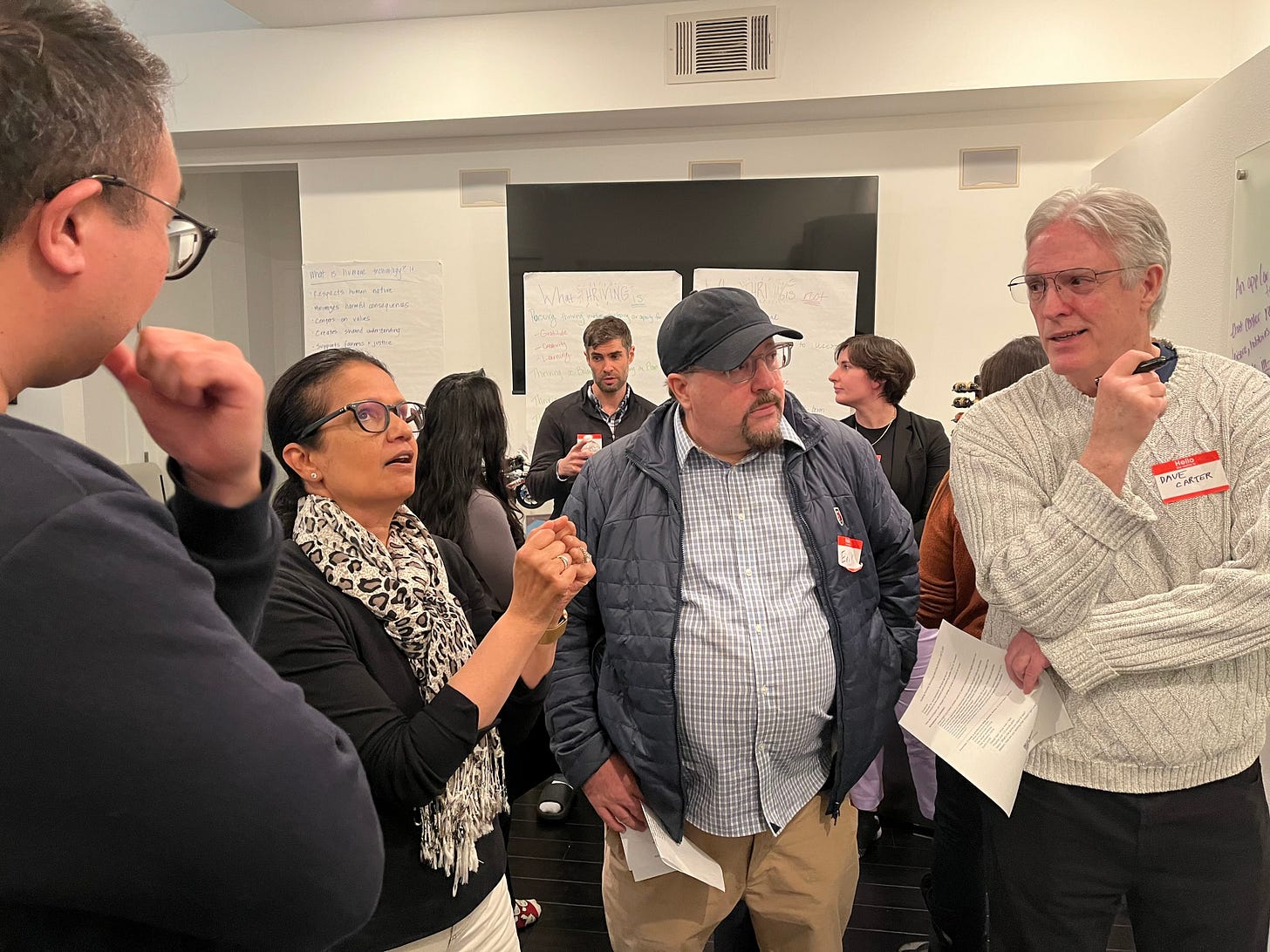How to Thrive with Tech
Use these principles to build technology that helps us flourish
Our most recent meetup brought together humane technologists, startup founders, product designers, and academics to explore how we can build technology that truly supports human flourishing. Inspired by the principles in the Center for Humane Technology’s "Module 7: Helping People Thrive," on February 12th, we dove into discussions, brainstorming sessions, and hands-on activities to translate theory into practical application.
With Valentine’s Day around the corner, we began with a mindfulness activity. I encouraged everyone to engage with a rose, appreciating its beauty, from the pleasant to the poignant. Like the rose, what’s fragile that you want to protect? I asked. What they shared, as you’ll see below, contributed to our definition of thriving.
Connecting with core values
We grounded ourselves in the core principles of humane technology, emphasizing the importance of
respecting human vulnerabilities,
minimizing unintended consequences,
centering values,
building shared understanding, and
supporting fairness and justice.
These principles act as a foundation for technology that genuinely contributes to thriving. As always, I brought Donella Meadow’s leverage points to the fore, as it guides us on how to intervene in a system. When it comes to thriving, we want to intervene at every level.
Why focus on thriving? Isn’t everything “fine”?
Alas, while the magic of technology is real, the pain is also real. Our phones are the best intermittent reinforcement devices around, and their effects on young kids, teens, parents, and the rest of us lie somewhere between undesirable and dire.
Ask yourself:
Have I ever experienced a phone coming between me and someone I wanted to connect with?
Have I ever spent longer on a device or an application than I meant to?
Have I ever seen those around me struggle to be present and engaged due to the influence of technology?
While we have our own agency, we also have to acknowledge how these devices and applications are built: for constant engagement. It’s time for builders to take accountability for their creations so we can support a thriving world.
Defining thriving
While each of us defines thriving differently, we could agree on what thriving isn’t:
it’s not an end goal or a simple metric to maximize, but a continuous process that guides our choices
it’s not distracted downtime, but a condition we help users define for themselves
Thriving involves balancing pleasure, pain, and meaning in our lives.
What does thriving mean to us?
Connecting to the Earth: One participant emphasized caring for the Earth and ensuring future generations can enjoy its beauty, connecting this to family well-being.
Protecting privacy: Another participant mentioned how privacy is precious, particularly our ideas and creations and the effort we’ve put into them.
Valuing time and thought: Having time for personal reflection helps us connect to the natural flows of life and bring forth our innate creativity.
Respecting human nature: Our attention is fragile and easily hijacked. Instead of enabling distraction and overwhelm, tech helps us thrive when it aids us in making choices that align with our values and intentions.
Intentionality and mindfulness: Participants explored how technology can support self-clarity and mindfulness rather than compulsivity and distraction.
The importance of kindness: Kindness is the foundation for collaboration and problem-solving. It also nourishes us at a chemical level, releasing serotonin and dopamine, which support our sense of satisfaction and well-being.
Space to grieve: To process life’s continuous transitions, we need space and time to grieve our losses. Some applications are built for this purpose, though nature, friends, and family can also be supportive.
How do you build for thriving?

Protect attention:
Design technologies that increase users' control over their own attention so they can direct it toward their thriving.
Minimize the consumption of user attention, both on and off-screen.
Add delays or friction to help keep attention and intention aligned.
Design for intentionality:
Encourage users to reflect on their intentions and then help them act upon them.
Prioritize user intention over capturing user attention.
Design defaults and incentives that help users make choices aligned with their values.
Design for deeply valuable experiences:
Support users in engaging in activities that require effort but allow them to live their highest values.
Help users spend meaningful time together outside of the product.
Strengthen inner capacities or resources that make people feel well.
No-code hackathon

With a shared enthusiasm for learning and building, we embarked on a "no code hackathon" to put these principles into action. After voting on ideas generated by our brainstorm, here’s what we built:
App #1: Bridging Differences: aims to promote discourse across different points of view to avoid echo chambers and foster community.
Design for deeply valuable experiences: The app aims to create more resilient relationships through active listening across different perspectives. It will create community, which satisfies the need for quality relationships and kindness.
Design for intentionality: Encouraging users to engage with diverse perspectives and intentionally seek out different points of view, rather than passively consuming content that reinforces their existing beliefs.
App #2: Rec Connect: promotes recreational therapy and in-person community building, helping users to prioritize activities and connections that foster well-being.
Design for deeply valuable experiences: The app provides direction to leisure, hobbies, connections, and relationships, which can all help the user feel fulfilled.
Protect attention: By promoting real-world activities, creating accountability between you and your users, and facilitating time that people spend together not using technology rather than replacing that time.
App #3: Dial In: aims to simplify values-based decision-making by helping users specify their values and then recommending products and services that align with those values.
Designing for intentionality: By prompting users to define their values upfront, Dial In helps them to be more intentional about their consumption habits and avoid impulsive purchases that may not align with their long-term goals.
Designing for deeply valuable experiences: By promoting values-based decision-making, Dial In encourages users to prioritize experiences that are meaningful and fulfilling, rather than simply pursuing fleeting pleasures or material possessions.
Next steps

By applying the principles of thriving, we can move beyond simply engaging users to genuinely empowering them to live fulfilling and meaningful lives.
What can you do?
Share how you’re building tech that helps people thrive
Join our growing Slack community
Connect me to podcast hosts that should cover humane tech:
email me: Erika at Storytell.ai
Attend a building humane tech meetup here in the Bay Area
Check out a humane tech webinar (or view a past one)
Let’s continue building a more humane digital world together!






